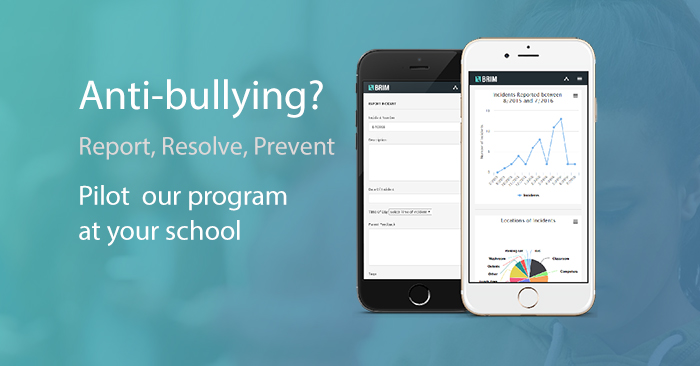Premier Christy Clark of British Columbia announced her government’s new ERASE (Expect Respect and a Safe Education) back in June of 2012. According to the BC government’s press release on the ERASE program, the program includes 10 elements that will kick in to effect starting with the 2012/2013 School Year.
As highlighted in point 4 of the ERASE program’s 10 point plan, this plan introduces tougher, mandatory reporting of bullying incidents in all school districts. How that reporting process should work is not completely clear, however in other provinces (e.g., Ontario and Quebec), the laws specifically state that all bullying incidents must be reported to the school principal or their designee.
What the ERASE Program Means for British Columbia Schools
For schools without systems in place to handle this increase in administrative work resulting from mandatory bullying incident reporting, the result will likely be schools failing to report bullying incidents and falling into non-compliance. This would be a shame as it’s difficult for schools to gauge the degree of bullying at their school and take corrective action without hard numbers about the magnitude of the problem.
To address the issue of non-compliance, the province of Quebec in their new Bill 56 Anti-Bullying Legislation originally called for administrative fines to be levied against schools in non-compliance with anti-bullying laws. While these provisions were dropped in the final version of the bill, they may again appear in future legislation
Using BRIM Anti-Bullying Software to Handle Bullying Reporting & Eliminate the Paperwork
While keeping paper records for every bullying incident could be time consuming and subject to errors, misfilings, lost papers, etc, an online system that provides principals and school administrators with a single place to both receive bullying reports and record their actions taken would simplify the process and make it less subject to error. Sign up for a free 14 day trial and see for yourself!
The 10 Elements of BC’s ERASE Anti-Bullying Strategy
- A five-year, multi-level training regime to train 15,000 educators and community partners. Year one training includes:
- a. Anti-bullying training, initially for elementary schools.
- b. Threat/risk assessment training, initially for middle and secondary schools.
- Approximately 20 per cent of the training provided in each region will available to community partners. This includes police, mental health workers, child-welfare workers, and other community partners.
- A new Smartphone app and online tools for kids to report bullying anonymously.
- Each district must designate a safe schools co-ordinator who will monitor the online student reporting site, have direct communication with the Ministry of Education, manage the ongoing relationship with community partners, and co-ordinate the delivery of multi-level training.
- Stronger codes of conduct for schools that must include a duty to report and respond in each district, and strengthened language consistent with the Human Rights Act. The enhanced codes must include: “The prohibition of discrimination on the basis of an individual’s or a group’s race, colour, ancestry, place of origin, religion, marital status, family status, physical or mental disability, sex or sexual orientation, or age.”
- Provincial guidelines for threat assessments and a template for district level threat assessment protocols.
- Enhanced online resources, including new multimedia information for parents.
- Each school district must develop formal community protocols to guide and co-ordinate their work with community partners such as Ministry of Children and Family Development child-care workers, police, and mental-health professionals.
- Creation of a provincial advisory committee, with representatives from police, schools, social agencies and other community partners.
- Focus one of the six provincial teacher professional development days on anti-bullying and a safe school culture within a personalized learning environment.
- Anti-bullying and threat risk assessment materials and training will be made available to university education programs for their inclusion in the teacher training curriculum.


